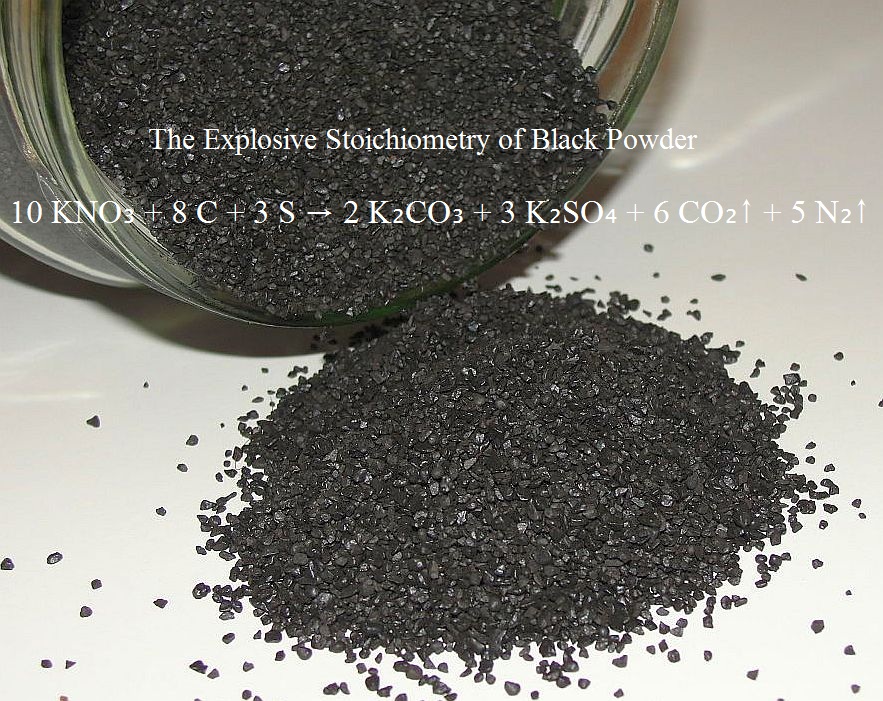
Exam time approaches and you realize your teacher is likely to write down some equations and expect you to fill in the blanks. So you would like to consider a few problems ahead of time to prepare you in advance. We will demonstrate two. The second problem is just a bit tricky. See if you can anticipate what gives!
Problem 1:
We will first consider the reaction of sodium hydroxide (NaOH) plus hydrochloric acid (HCl) to yield sodium chloride (NaCl) plus water (H₂O).
NaOH + HCl → NaCl + H₂O
Only one molecule of each reactant is needed to produce one molecule of each product.
1 NaOH + 1 HCl → 1 NaCl + 1 H₂O
The atomic weights for this problem are sodium (Na) 23, oxygen (O) 16, hydrogen (H) 1, and chlorine (Cl) 35.5.
From this, we can write the molecular weights of each component in grams, getting
40 g NaOH + 36.5 g HCl → 58.5 g NaCl + 18 g H₂O
Suppose we want to make as much salt (sodium chloride) as we can. We have plenty of HCl, but just 21.9g of NaOH. How much NaCl can we make? Let’s rewrite the reaction equation and find out.
21.9g NaOH + (21.9/40)(36.5)g HCl → (21.9/40)(58.5)g NaCl + (21.9/40)(18)g H₂O
Answer: So the answer to our question is, we can make a maximum of 32.0 grams sodium chloride, NaCl.

Problem 2:
You seek two reagents from the chemical shelves at school. One is sodium sulfate; the other is barium chloride. You are told to prepare barium sulfate according to the reaction,
Na₂SO₄ + BaCl₂ → 2 NaCl + BaSO₄↓
The closest you can come is sodium sulfate decahydrate, Na₂SO₄•10H₂O for the one compound, and barium chloride dihydrate, BaCl₂•2H₂O for the other. Both of these have water of crystallization included in their molecular structure. How much of each of these two reagents will you need to produce 100 grams of barium sulfate precipitate, BaSO₄?
Constituent atoms have the following atomic weights: sodium 23, sulfur 32, oxygen 16, barium 137.3, chlorine 35.5, hydrogen 1.
The molecular weight of barium sulfate is 137.3 + 32 + 64 = 233.3. But you only need 100 grams. So your multiplier is (100/233.3).
Now the molecular weight of sodium sulfate is 46 + 32 + 64 = 142, right? Using the multiplier, you get (100/233.3)(142) = 60.9 grams.
Similar reasoning gives you, for barium chloride molecular weight 208.3, (100/233.3)(208.3) = 89.3 grams.
So you write:
[60.9 grams] Na₂SO₄ + [89.3 grams] BaCl₂ → BaCl₂+ [100 grams] BaSO₄↓
You take the sodium sulfate you obtained and the barium chloride, and you weigh out 60.9 grams and 89.3 grams respectively. You carry out the reaction. Then you collect, rinse, dry, and weigh the barium sulfate. What? It only weighs 44.1 grams! What is wrong?
If you haven’t figured it out, it is this: your sodium sulfate and your barium chloride included water of crystallization, which, in effect, diluted the active compounds you used to carry out the reaction. The percentage of water in the sodium sulfate you used was, in fact, only 44.1 percent sodium sulfate. The remainder was the 55.9 percent, namely water. The molecular weight of the pure stuff is 142 grams, but the decahydrate has a molecular weight of 322.2.
Answer: [138g] Na₂SO₄•10H₂O + [104.7g] BaCl₂•2H₂O → 2 NaCl + [100g] BaSO₄↓ + 12 H₂O
Note: the water content of the barium chloride was much less, so it was not the limiting factor in the reaction. If the sodium sulfate had been water free, the water content of the barium chloride would have impacted the amount of barium sulfate produced, only not as much.
